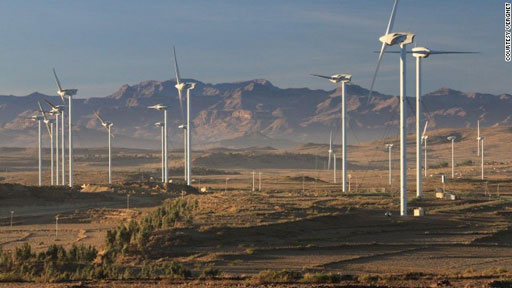1.2.2 Energy resources
The use of renewable or non-renewable resources is a critical factor when considering energy resources. Fossil fuels have been the main energy source for global industrialisation, but because they are non-renewable, the quantity is ultimately limited and their use is not sustainable over the long term. Furthermore, burning of fossil fuels is the main cause of climate change. (Climate change is discussed fully in later study sessions.) There are several renewable alternatives to fossil fuels. Wood used as a fuel is renewable in the sense that trees will regrow but there are other disadvantages such as deforestation, as you have read. In Ethiopia, windfarms are harnessing wind power to generate electricity (Figure 1.4) but the most important source of renewable energy in Ethiopia is water. Ethiopia already has several hydropower stations and more are planned, including the Grand Ethiopian Renaissance Dam, currently under construction. Hydroelectric power is renewable because it makes use of the energy of flowing water but does not use up the water in the process. Another renewable energy source is solar power, using photovoltaic cells that convert the sun’s energy into electricity.

1.2.1 Deforestation
